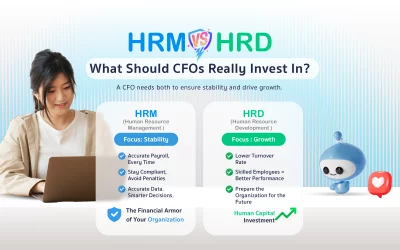Mindset is a term that is increasingly used in the context of motivation and personal development. According to the Center for Educational Psychology at the Sathirakoses-Nagapradipa Foundation, Mindset, or ‘mental framework,’ is defined as a belief system. What’s important is that Mindset goes deeper than the general concept of ‘belief’ because Mindset is a ‘belief that influences behavior.’ Mindset can exist in two forms: Growth Mindset and Fixed Mindset.
- Mindset is a mental framework that carries a deeper meaning than the word ‘belief’ in general because it is a ‘belief that influences behavior.’ It exists in two forms: Growth Mindset and Fixed Mindset.
- Individuals who achieve success often possess a Growth Mindset, believing that they can develop various skills that they may currently lack. On the other hand, those with a Fixed Mindset tend to believe that their abilities are limited and cannot be improved.
- The first step in changing your Mindset is to listen to your internal Mindset voice, especially when facing different challenges. If the voice in your head urges you to give up, it may indicate a Fixed Mindset. If you hear both Fixed and Growth Mindset voices, choose to listen to the Growth Mindset.
- If you identify as having a Fixed Mindset, start changing your thinking by adopting a Growth Mindset perspective. Challenge yourself to change your behavior through consistent practice and action.
- If your efforts don’t lead to success, tell yourself, ‘I haven’t succeeded yet,’ instead of ‘I can’t do it.
According to the research of Carol Dweck, a psychologist, individuals who achieve success often have a different Mindset compared to the general population. Successful individuals tend to have a Growth Mindset, believing that they can develop various skills they may currently lack, while the general population often has a Fixed Mindset, thinking that our abilities are limited and cannot be improved.
It’s important to note that having either Mindset is not inherently wrong because the fundamental human nature is to seek comfort and avoid risks. However, for individuals in the workforce, having a Growth Mindset tends to lead to personal development. Therefore, it’s worthwhile to examine our own Mindset and consider how we can develop it further if desired.
Listening to Your Mindset
The first step is to become aware of your own Mindset. Try to think about what your Mindset might say to you when faced with a new and challenging task. Does it say things like, ‘Can I do this?’ ‘Am I good enough?’ ‘What if I fail?’ If you often hear these kinds of thoughts, you may have a Fixed Mindset, which can make you hesitant to develop yourself and might even lead to career stagnation.
Choose to Listen to a Growth Mindset
Once you’ve identified your Mindset, the next step is to find the reasons behind what makes you doubt yourself. If you discover those reasons, it’s up to your interpretation whether you view them as obstacles to avoid or as opportunities for developing new skills. If you choose the former, you’re likely using a Fixed Mindset. If you choose the latter, you’re transitioning towards a Growth Mindset.
Arguing Back
Mindsets are deeply ingrained in us, and changing them can be quite challenging initially. The Fixed Mindset in our heads will continue to talk to us all the time. One way to deal with it is to argue back. When you find yourself in a challenging situation, the Fixed Mindset may send you negative messages. In response, answer back with a Growth Mindset, such as:
- Fixed Mindset in your head says: ‘Can you really do this? You’re not capable.
- Growth Mindset responds: ‘I’m not sure, but with effort, I can learn.
- Fixed Mindset in your head says: ‘If you mess up, they’ll think poorly of you.
- Growth Mindset responds: ‘Everyone makes mistakes; we learn from them.
Take Action
The goal of changing your mindset is not just about altering your thinking but also influencing your behavior. Often, our fixation on a Fixed Mindset is because we’re reluctant to step out of our comfort zone. When we translate the voice of a Growth Mindset into actions and pinpoint the causes of our self-doubt, we can then find ways to practice in those areas. This enables us to expand our comfort zone, ultimately enhancing our capacity for self-improvement.
There’s nothing that you ‘can’t do,’there’s only ‘can’t do it yet.’
We must acknowledge that in many things, success doesn’t happen instantly as we may think. When we try and make mistakes, we may tend to revert back to a Fixed Mindset. What we can do when change doesn’t yield immediate results is tell ourselves that we just can’t do it yet, not that we can’t do it at all. Adding the word ‘yet’ helps transform our mindset into a Growth Mindset. For example, saying ‘I can’t do it’ can lead to a Fixed Mindset, but saying ‘I can’t do it yet’ implies that there’s a possibility in the future, which is a Growth Mindset.
Mindset has a significant impact on our thought processes and future decision-making. Therefore, try changing your thinking from being stuck in the old mindset and work on developing a Growth Mindset – a mindset that views obstacles not as problems but as opportunities to ‘try’ something new. We should always believe that the world never stands still, and as such, we, as humans, should never stop evolving.





